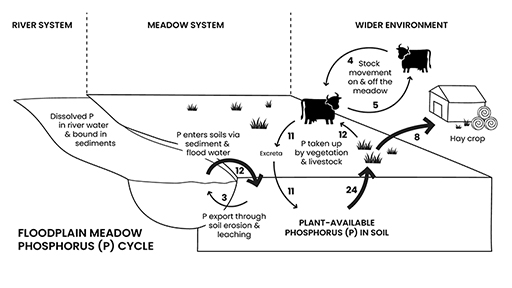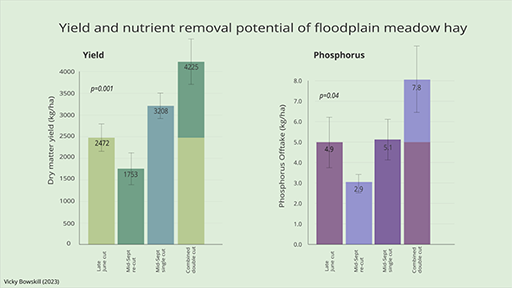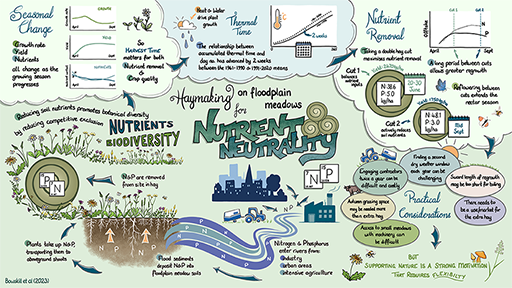3 Floodplain meadows as a tool to reduce nutrients
In the past, swathes of floodplain meadows alongside watercourses played a role in managing water quality. By taking a hay cut, we can remove phosphorus from the freshwater system by using meadow management as a ‘phosphorus pump’.
The timing of haymaking affects the nutrient content. The optimal time is when the plants allocate nutrients to their shoots for flowering and seed production. After that, nutrients are taken back below ground. Hay harvest was traditionally around midsummer (24 June) in lowland England. This optimal date may become earlier if climate change results in the faster development of the crop. A timely first cut allows a second harvest in September. Two harvests have substantial benefits for nutrient removal (see Figure 4); ~60% greater than a single cut (Bowskill et al., 2023).
The Floodplain Meadows Partnership has compiled a database of phosphorus budgets over the past 20 years. They suggest meadows are net exporters of phosphorus from river systems. The mean export of phosphorus is 7.9 kg ha-1 yr-1 to the wider environment (assuming a single hay crop and three floods per year.).
Watch this video showing how hay makes meadows from an ancient floodplain meadow in Oxfordshire.
Activity 2

Examine Figure 3.
- Calculate the percentage of the phosphorus entering the site that is removed from the site by a) hay and b) grazing.
- What could an additional land management decision be to remove further nutrients?
Discussion
- a) 50% b) 6.25%
- An additional cut in autumn
Study this poster and list the two main ways floodplain meadows can be managed to tackle water quality in floodplains.
Discussion
The two ways are:
- cut twice
- cut at the right time of year


